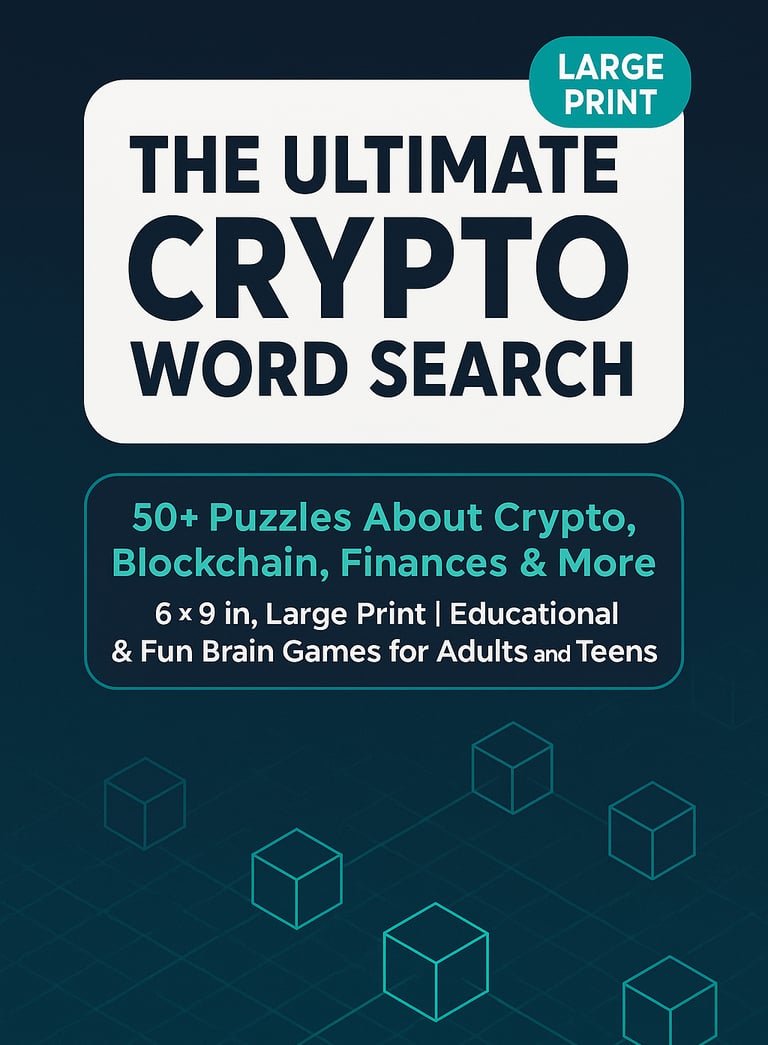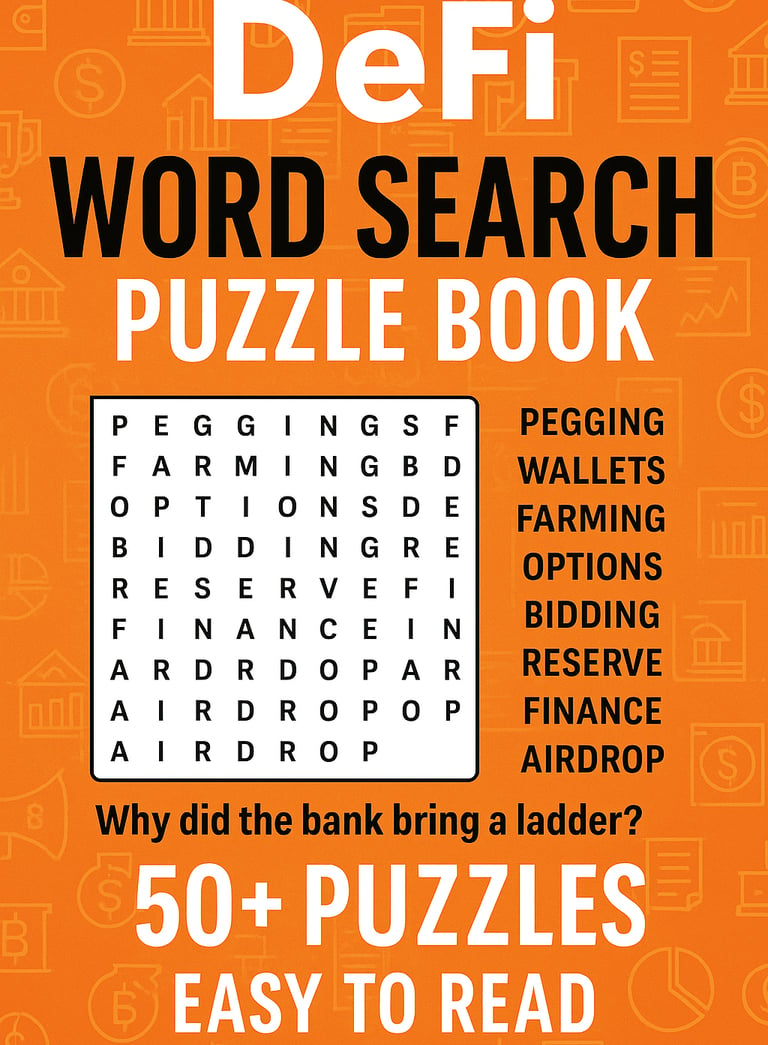How to Buy Bitcoin: The ULTIMATE Beginner’s Guide
Discover how to buy Bitcoin safely and easily with our beginner-friendly guide. From choosing exchanges to securing your crypto assets—start your Bitcoin journey today!
Equipo Editorial de Chain
6/6/202513 min leer
🚀 Fast Facts
Bitcoin's Surge: Bitcoin has surpassed $100,000 in 2025, drawing in a new wave of investors.
Beginner-Friendly Platforms: Multiple platforms offering user-friendly interfaces for newcomers.
Secure Storage Options: Understanding the difference between hot wallets (online) and cold wallets (offline) is crucial for asset security.
Start Small: You can begin investing with as little as $100, utilizing strategies like dollar-cost averaging.
Tax Implications: Cryptocurrency gains may be subject to taxation; it's essential to stay informed about local regulations.
🔍 Imagine This…
You’re standing at the edge of a bustling financial revolution.
Picture yourself casually sipping coffee at your favorite café, watching your smartphone screen as you effortlessly purchase Bitcoin—digital gold, bought within seconds.
Now, what if your investment is safely stored in an ultra-secure digital vault that only you control?
No banks, no intermediaries, just pure financial freedom. It’s not some distant future; it's now. And it starts with understanding exactly how to buy Bitcoin, step-by-step.
Ready to dive in?
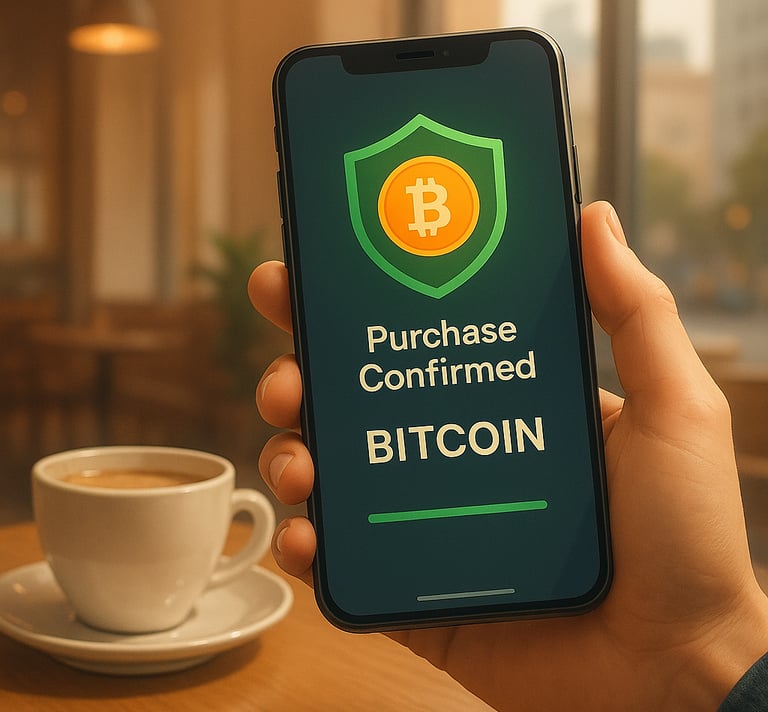

💡 Let’s Dive In
🧭 Step 1: Understand What You're Buying
Before you drop a single dollar into Bitcoin, pause.
You’re not just buying “magic internet money” or chasing a trending asset — you’re stepping into a new kind of financial system.
What if …
A global currency that no government can print, no company can control, and that anyone, anywhere, can use — just with a smartphone and internet connection. That’s Bitcoin.
It’s decentralized, meaning no single entity — not a bank, not a CEO, not even a country — calls the shots.
Instead, it's powered by a vast network of computers (called nodes) that verify and record every transaction, openly and permanently, on a digital ledger known as the blockchain.
Think of the blockchain like a public, uneditable receipt book that stretches across the internet — visible to anyone, but impossible to tamper with.
This means:
No need to “ask permission” to send money.
No surprise bank fees.
No 9-to-5 banking hours.
You’re not just buying Bitcoin — you’re buying sovereignty, transparency, and a front-row seat to the most important financial shift since the internet itself.
🧭 Step 2: Choose Your Bitcoin Buying Path — Exchange or Not?
Let’s get something straight: you don’t need to use a traditional exchange to own Bitcoin.
🔄 Alternative Buying Paths
Before you go signing up on a platform, consider these non-exchange options:
2.1 Peer-to-Peer (P2P) Transactions
How it works: You buy Bitcoin directly from another person.
Pros:
No central authority.
Can be fully anonymous.
No KYC required.
Cons:
Requires trust or escrow.
Risk of scams if precautions aren't taken.
Might be slower for beginners.
If you're looking to buy Bitcoin directly from other users—without intermediaries—peer-to-peer (P2P) platform, Best Wallet is one example leading the way in 2025:
Best Wallet – Privacy-First Mobile Trading
Why it stands out: Best Wallet offers a mobile-first experience with support for over 60 blockchains. It allows users to trade without mandatory KYC, providing enhanced privacy. The platform also supports various payment methods, including credit cards, PayPal, Apple Pay, and Google Pay.
Ideal for: Users prioritizing privacy and mobile accessibility.
2.2 Bitcoin ATMs
How it works: Insert cash, get BTC sent to your wallet.
Pros:
Physical and accessible in many cities.
Great for cash-only users.
Cons:
Often high fees.
Not available everywhere.
May require ID depending on region.
2.3 Face-to-Face Trades
How it works: You meet someone (usually from online forums) and swap BTC for cash.
Pros:
Can be anonymous and offline.
Cons:
Risky without strong precautions or mutual trust.
Not recommended unless experienced.
🏦 Now, Let’s Talk About Exchanges
If you want the most user-friendly, fast, and beginner-safe option—centralized exchanges are still the go-to.
But they’re not all the same, and blindly trusting any of them is a rookie move.
🏁 What to Look for When Choosing an Exchange:
Instead of pushing a specific platform, here's how to pick what’s right for YOU:
🔐Security should be your #1 priority. Look for platforms that keep the majority of funds in cold storage, offer 2FA (two-factor authentication), and have a good track record with no major hacks or scandals.
💰Fees affect your long-term returns. Some exchanges charge high fees for convenience, especially when using debit or credit cards.
Others, like Binance, have lower fees but may sacrifice user experience.🧑💻User Experience (UI/UX) is also key. If you're just starting out, a clean and intuitive interface like Coinbase might suit you best.
More advanced traders might prefer Kraken’s tools—even if the layout feels heavier.🌐Supported Countries and Currencies should match where you live. Not all exchanges are global, and some are limited in the fiat currencies or payment methods they accept.
🕵️KYC Requirements vary. Some exchanges require full identity verification up front, while others allow small trades without ID.
Decide how much privacy vs. access you want.⚠️ KYC validation isn’t always smooth.
SMS codes can fail to arrive.
Facial recognition might glitch out.
ID scans might get rejected for no clear reason.
It’s not you — it’s the system.
So before you dive in, be patient and prepared. Have backup docs ready, try different browsers if something breaks, and don’t be surprised if verification takes longer than expected.
🧠 If you're privacy-minded, start small on platforms that delay or minimize KYC — or consider P2P options.
💸Withdrawal Limits matter if you plan to scale up. Exchanges have different limits for how much crypto you can move out daily or monthly.
Finally, Reputation matters. Stick with platforms that have been around a few years and have a solid reputation in the crypto community.
🧾 Final Take – Your First Block in the Chain
Buying Bitcoin isn’t just a transaction — it’s a shift in mindset.
It’s opting out of the old system, and opting in to one where you’re in control.
You’ve just:
Discovered how to buy BTC — with or without an exchange.
Learned the difference between hot wallets, cold wallets, and how to actually protect your coins.
Realized taxes don’t disappear in crypto — but neither does opportunity.
But more than that?
You’ve taken the first real step into a financial system built by people, not gatekeepers.
This is your first block — your signal on the chain.
👣 Your Next Moves:
🔐 Pick your wallet — hot for access, cold for security.
💸 Make a small test buy — start slow, build confidence.
🧠 Secure your seed phrase — treat it like your grandma’s secret recipe plus your Netflix password plus your passport. Yeah, it’s that important.
🧭 Want to level up?
Explore staking, DeFi, Security, and wallet layering in our 🔗Crypto Security & Earnings Masterclass.
🔔 Stay Plugged Into the Chain
Don’t just read the future — ride it.
Join crypto-curious minds who are already unlocking insights with us.
📬 Subscribe to our newsletter for weekly alpha, real-world strategies.
📱 Follow us on Instagram and X for bite-sized insights, memes, and market signals that actually make sense.
👉 Your journey through the chain starts here.
🧩 Exchanges Worth Exploring
There are dozens of platforms out there — and the “best one” really depends on your style, region, and goals. Some are centralized giants, others are up-and-coming with unique offerings. Here’s a peek at a few we’re watching closely:
🏆 Binance – Our Primary Pick (Once KYC Stops Ghosting Us 🤦♂️)
We’ve used Binance for years — low fees, massive asset selection, staking, Launchpad access, solid security with withdrawal whitelisting… it’s the full package.
📊 276+ million users can’t be wrong, but we’ll update our take as soon as the KYC gods bless our account.
🪙 Start Earning with Binance — It’s Free to Join & Learn ✨
🚀 AsterDex – Decentralized Perpetuals, Built for Serious Traders
Trade perpetual contracts across multiple chains, with high liquidity and serious performance.
💰 $400B+ total trading volume
👥 804,000+ users
🔗 Multi-chain support
🛡️ Secure, transparent smart contracts
Perfect for users looking for a DeFi-native trading platform that doesn’t compromise on speed or scale.
🚀 Unlock AsterDex — Explore Web3 Without Spending a Cent ✨
🔓 Unich – Pre-TGE Tokens, Lending, and Staking in One
Unich is like the Swiss Army knife of next-gen finance: trade, borrow, lend, stake — even before token generation events (TGE).
👤 3.4M+ trusted users
💸 $774M+ in total volume
📈 Offers access to early-stage token opportunities
🔐 Designed for both Degen and DeFi power users
Great for users who want to catch 🚀pre-launch token momentum before the rest of the market does.
🪙 Start Earning with Unich — It’s Free to Join & earn ✨
💭But how about other big players out there?
Well, currently stuck at the usual KYC bottleneck: SMS code fails, ID scan glitches. If you’ve been there, you know the pain
🧠 We’ll keep testing and updating this list — especially once we win our KYC war with some other big players.
🎓A full breakdown of these platforms is coming soon. Stay tuned.
Until then, explore, compare, and always DYOR (Do Your Own Research)
💭 Still wondering which one to use?
Here’s what I personally use:
I’ve been on Binance for over 4 years, and it’s been smooth sailing. Their security is a standout — withdrawal address whitelisting is one of my favorite features. It ensures that only pre-approved wallets can receive my funds. No stress, no second-guessing.
Plus, their Launchpool rewards have been a hidden gem. By simply staking BNB, I regularly get new tokens dropped into my wallet automatically — I don’t even have to lift a finger.
The Binance Earn section is great for passive income, and their dashboard layout just makes sense. Clear. Powerful. Efficient.
💭Wondering if all my assets are there. No, I don't keep all my assets in one place.
🎓A full breakdown on a strong strategy to protect your assets is coming soon. Stay tuned.
But here’s where things get spicy...
If you're ready to go beyond the walled garden, DeFi (Decentralized Finance) unlocks even more powerful earning potential, often with higher yields, no middlemen, and full control over your assets.
Imagine earning interest, providing liquidity, or staking tokens directly from your own wallet, without relying on a central platform.
✅ Higher returns.
✅ 24/7 access.
✅ You’re the bank.
In DeFi, it’s a different game — you stake, sleep, wake up, and collect, with yield pools quietly working for you while you live your life.
👉 Curious? Explore our deep dive into 🔗The Ultimate Beginner's Guide to Decentralized Finance
🛡️ Step 3: Set Up and Secure Your Account
You’ve picked your exchange—or maybe you’re going P2P or ATM route. Time to get your setup right.
🛡️ Your First Line of Defense: Account Setup Essentials
Once you've chosen your path — whether it's an exchange, wallet app, or P2P platform — your account security becomes your responsibility. Think of this step as locking the doors before stepping into a wild digital frontier.
Here’s your non-negotiable security checklist before buying Bitcoin:
✅ Use a strong, dedicated email
Don’t reuse your Gmail from 2008. Set up a fresh, secure email just for crypto. ProtonMail or Tutanota are privacy-focused options worth considering.
✅ Enable 2FA immediately
Use apps like Google Authenticator or Authy — never rely on SMS-based codes. Your phone number can be hijacked.
✅ Create strong, unique passwords
Don’t even think about using your dog’s name. Use a password manager like Bitwarden or 1Password to generate and store long, complex, and unique passwords for each crypto service.
✅ Set withdrawal whitelist addresses
This feature locks your account so funds can only be sent to pre-approved wallet addresses. Even if someone hacks your login, your assets can’t be withdrawn elsewhere.
✅ Bookmark the real site
Scammers use fake exchange URLs that look identical. Bookmark the official site and triple-check before logging in. Phishing is everywhere.
🔐 What About Wallets, Seed Phrases & Backup?
If you’re using a non-custodial wallet (like MetaMask, Exodus, or a hardware wallet like Ledger or Trezor), you’ll be given a seed phrase — typically 12 or 24 random words.
Do this right:
Write it down on paper, not on your phone or computer.
Store it in a safe place, like a fireproof safe.
Consider using metal seed storage for long-term safety.
Never share it. Ever. No support team will ever ask for it.
💰 Step 5: Place Your First Order
(But Wait, There’s More…)
Before diving into charts and candlesticks, you should know: you can buy Bitcoin without ever seeing a “trading” screen.
Let’s compare your options:
Swap Services: These are ideal for simplicity. You enter the fiat or crypto you have and swap it instantly for BTC. This is often available in apps like MetaMask or mobile wallets. Swaps are beginner-friendly but can come with higher fees and trade limits.
P2P Trades: As discussed earlier, these are great for privacy. Platforms like Bisq and HodlHodl let you find sellers and agree on prices directly. You keep control of your wallet the entire time. This is more complex but preserves your autonomy.
Centralized Exchange (CEX): The most familiar option. You deposit fiat via bank, card, or e-wallet and buy BTC at the market rate. It's easy, widely available, and supports most countries. However, it often involves KYC and requires trust in the platform.
💸 How to Actually Buy Bitcoin (Exchange vs. Wallets)
By now, you're probably itching to finally buy some Bitcoin — but hold up…
How you buy matters just as much as where you store it.
Let’s break down the two most common paths — one through centralized exchanges, the other through non-custodial wallets like MetaMask, Trust Wallet, Phantom, and even your browser (yes, Brave has a built-in crypto wallet now).
🏦 Option 1: Buying Bitcoin on a Centralized Exchange (CEX)
If you’re using a platform like Binance, Coinbase, Kraken, or Crypto.com, the process is built for speed and simplicity.
Here’s how to do it:
Log in to your account.
Navigate to the “Buy/Sell” or “Trade” section.
Choose Bitcoin (BTC) as the asset you want.
Enter the amount in your local currency (e.g., $100).
Select your payment method — bank transfer, credit/debit card, Apple Pay, etc.
Review the transaction details and fees.
Click “Buy” — and boom, your BTC will show up in your exchange wallet balance.
✅ Great for beginners, fast, and supports fiat payments.
⚠️ But remember: it’s not your keys, not your coins — move your BTC to a personal wallet for long-term safety.
🔐 Option 2: Buying Bitcoin Through Wallets (No Exchange Needed)
Want full control from the start? Many wallets let you buy crypto directly inside the app — and send it straight to your own address.
🚀 Popular Wallets That Let You Buy BTC (Without a Centralized Exchange)
Want full control from day one? These non-custodial wallets let you buy Bitcoin directly from your phone or browser, skipping centralized exchanges altogether.
Here’s a look at the best options right now:
🦊 MetaMask
Ethereum-first, now Bitcoin-ready
Supports BTC via MoonPay, Transak, and other fiat ramps
Built for Web3 and DApps, with extensions and mobile support
Great for multi-chain users expanding beyond Bitcoin
🔐 Trust Wallet
Supports Bitcoin and 60+ blockchains
In-app crypto purchases via MoonPay, Ramp, Binance Pay
Includes staking, NFTs, and token swapping tools
Ideal for beginners looking for all-in-one mobile freedom
🌊 Phantom Wallet
Originally built for Solana, now multi-chain (ETH, BTC via integrations)
Clean UI and direct integration with Solana DeFi & NFTs
Supports in-app purchases and swaps
🦁 Brave Wallet
Built directly into the Brave browser
Native wallet (no extension needed)
Buy, store, and manage BTC, ETH, and others
Ideal for users who want to surf + stack sats in one place
💎 Best Wallet
Privacy-first, feature-rich wallet
Seamless multi-chain wallet with deep P2P integrations
Over 60 supported blockchains and fiat purchase options
In-app access to NFTs, swaps, and DeFi protocols
Focused on security, privacy, and mobile-first design
Excellent option for users who want non-custodial control with built-in earning tools
Here’s how it works:
Open your wallet app (MetaMask, Trust, etc.).
Tap “Buy” or “Add Funds.”
Choose a provider.
Select Bitcoin (BTC) and input the amount.
Complete the payment using your card, Apple Pay, or bank transfer.
BTC is sent directly to your wallet address — no exchange middleman.
✅ Full custody from the start.
✅ More privacy (some wallets support no-KYC providers).
⚠️ Higher fees, and payment options may vary by region.
🧠 ChainInsight:
Buying from a wallet = total sovereignty. But it also means you’re responsible for everything.
Just make sure your seed phrase is secure before loading any real value. No password reset. No second chances.
🧍♂️ To KYC or Not to KYC that is the question?
Before even registering for an exchange or P2P platform, you’ll likely encounter the term KYC (Know Your Customer). This is the process of submitting ID documents, proof of address, or even selfies to verify your identity.
If you choose to use KYC platforms, you’ll unlock higher deposit and withdrawal limits, gain access to fiat deposits (like wire transfers or credit cards), and have access to responsive customer support. The downside is your data is stored by the company, and you lose a degree of privacy.
Going the non-KYC route is ideal for privacy-conscious users, but comes with trade-offs. You may face lower limits, fewer features, or compatibility issues with bank accounts or fiat. And if something goes wrong, you’re likely on your own.
It’s about risk tolerance vs. convenience—choose based on what you value most.
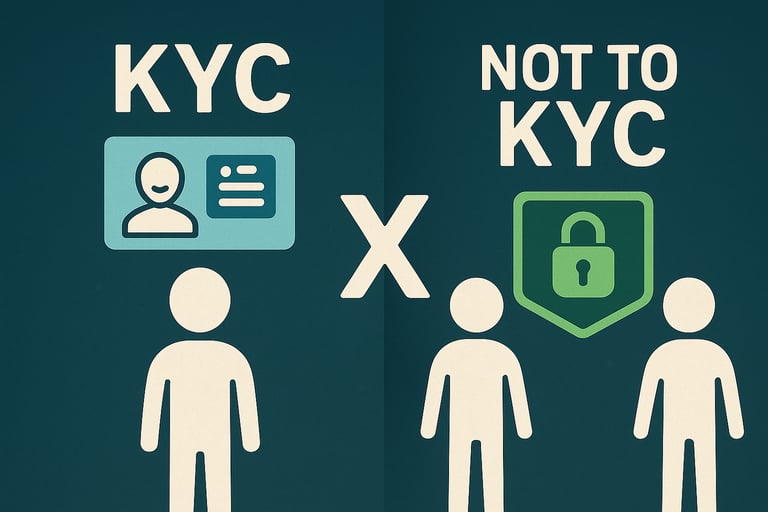

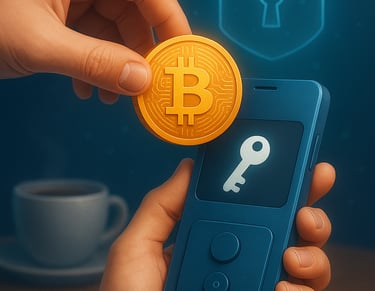

🔐 Step 6: Secure Your Bitcoin Like a Pro (Not a Victim)
So… you’ve got Bitcoin.
Now what?
Here’s a hard truth:
If you don’t control the keys, you don’t really own your Bitcoin.
That’s where wallet choice comes in — and the difference between hot and cold wallets matters more than most beginners realize.
🔥 Hot Wallets
These are connected to the internet — think mobile apps or browser extensions.
They’re perfect for daily access and fast transactions, but come with security risks if you store large amounts long-term.
Pros: Super convenient, great for everyday use
Cons: Vulnerable to online hacks, not ideal for holding serious value
❄️ Cold Wallets
Cold wallets are offline — like a hardware device or even a paper wallet.
They’re built for serious HODLers and offer maximum protection from online threats.
Pros: Extremely secure, ideal for long-term storage
Cons: Less convenient, may cost $70–$150 upfront
🛠️ Wallet Examples
Trust, Phantom, Brave and Best Wallets → Best for mobile users who want quick access and a simple interface. Ideal for beginners.
Ledger Nano X, Trezor Model T → These are hardware wallets that keep your BTC completely offline. Perfect for long-term holders and security-conscious investors.
MetaMask → Technically for Ethereum and tokens, but now supports Bitcoin via integrations. A solid choice for browser-based Web3 users and NFT collectors.
🧠 ChainInsight:
The more value you hold, the more important it is to move off hot wallets and into cold storage.
And whatever you do — always back up your seed phrase and store it securely. That phrase is your lifeline.
👉 Want a full breakdown of wallet types, recovery tips, and seed phrase safety?
Check out our upcoming deep dive: “Crypto Wallet Security: What Every Holder Must Know” (coming soon).
🧠 Security Tip:
Once you’ve bought Bitcoin on an exchange, transfer it to a personal wallet.
Don't leave your coins sitting in someone else's vault (aka exchange wallet). Hacks happen. And sometimes… exchanges “go dark.”
🧠 Your Seed Phrase = Your Lifeline
When setting up a wallet, you’ll be shown 12–24 random words — your seed phrase.
Write them down on paper.
Don’t screenshot.
Don’t store online.
Don't share with anyone. Ever.
If someone gets your seed phrase, they can steal everything — no customer support, no reversal, no mercy.
🎒 Bonus: Store a backup in a fireproof location or consider metal plates for physical longevity.

Suscríbete a nuestro boletín
CIN - ChainInsights Net
Crypto Education & Legacy Platform.
Descubre el mundo de las finanzas cripto, las últimas tendencias y las mejores estrategias del mercado.
© 2025 ChainInsights Net. Todos los derechos reservados.
⚠️ Descargo de responsabilidad
Todo el contenido (publicaciones, herramientas, enlaces, comunidad, redes…) es solo con fines educativos.
No garantizamos precisión ni actualidad.
No constituye asesoría financiera, legal o de inversión. Consulta fuentes y asesores antes de tomar decisiones. El cripto implica riesgos.
❤️ Impulsa la Misión
Toda idea que cambia el mundo comienza con alguien que cree.
Todo movimiento nace de una chispa, pero se necesita una comunidad para avivar el fuego.
Tu apoyo nos ayuda a crecer, reducir los anuncios y seguir siendo verdaderamente libres.
Donaciones: 0x331381fB8AE4894d8Ee8d1f066C4582B2262ccDA

